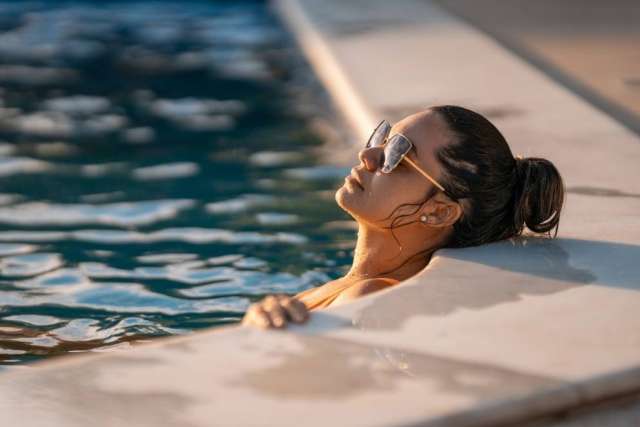Nothing completes an outfit like a great pair of sunglasses. But those tinted lenses do a lot more than just look good. The right pair of sunglasses can offer important protection from the sun’s damaging ultraviolet (UV) radiation — the same UV light that can wreak havoc on your skin. The good news is that you don’t have to sacrifice style for safety when shopping for shades. But you need to know what to look for because how you protect your eyes now can play a big role in your eye health later in life.
How sunlight can damage your eyes
Ultraviolet (UV) radiation can damage eyes the same way it affects skin — and lighter eyes, like lighter skin, are at increased risk of damage. Over time, UV rays can damage the eye’s cornea (surface layer), tissues and lens regardless of whether the UV light is natural or artificial, direct or reflected. The more your eyes are exposed to UV rays, the more severe the damage will be.
Taking steps to protect your eyes from UV rays can help you avoid eye conditions such as:
- Cataracts, a condition when the lens of your eye becomes cloudy causing blurry or colorless eyesight
- Eye cancers, including melanoma and lymphoma, which start and grow in the eye
- Eye growths, such as pterygium and pinguecula, which commonly start on your eye’s conjunctiva (clear tissue covering the whites of your eyes) and can eventually affect your vision
- Photokeratitis, or sunburned eyes, a painful eye condition affecting your eyes’ surface layer (cornea) and conjunctiva
- Snow blindness, a common form of photokeratitis, which occurs when UV rays reflect off ice and snow and damage the eyes
Choosing protective sunglasses
Sunglasses come in all sizes, shapes and colors. To ensure they are providing maximum protection for your eyes, here’s what you need to know about your options:
UV protection
While looking good is important, when it comes to protective eyewear, the label is where you need to focus. Most reputable brands will list the UV protection on an obvious sticker or tag. Look for sunglasses that offer 100% UV protection from all UV light (UVA and UVB) or 100% protection against UV 400.
If you are uncertain about an older pair of sunglasses, check the level of protection they offer by taking them to an optical shop with a UV light meter. The test takes less than a minute, and most opticians will do it for free.
Lens color
Sunglasses with darker or mirrored lenses don’t necessarily offer more protection. The shade and color have no bearing on the UV protection provided. Mirrored lenses can cut down on the amount of light entering the eyes, but unless the label says 100% UV protective, do not assume the lenses are protective.
If you have a chronic eye condition, such as macular degeneration or diabetic retinopathy, consider amber or brown lenses, which can help you see better. But UV protection is still the most important feature to look for when purchasing sunglasses.
Polarization
Polarized lenses are more comfortable for most people because they reduce the glare of light reflecting off surfaces such as water, snow and roads. But polarization does not provide any protection from UV light. Some polarized lenses do also offer UV filtering, so opt for ones with maximum protection.
Size
The size of your sunglass lenses matters when it comes to protecting your eyes. Research shows that indirect exposure does affect eyes. UV light that is reflected or diffused by clouds and particles can reach the eyes from above, below and all other directions. For maximum protection, consider wearing oversized or wraparound sunglasses.
Do children need sunglasses?
Children spend a lot of time outdoors and their eyes’ natural filters are still developing, leaving them especially vulnerable to sun damage. And exposure to UV radiation adds up over a person’s lifetime — 80% of lifetime exposure occurs before age 18. So early sun exposure can have long-term consequences.
Children as young as 6 months can wear sunglasses. Just make sure you choose a pair with UV protection and impact protection. Frames with impact resistance are flexible and less likely to break, protecting your child’s eyes during falls and active play.
Additional tips for protecting eyes from sun damage
In addition to wearing protective sunglasses, take these steps to increase your eyes’ protection from UV rays:
- Avoid tanning beds which expose your eyes directly to UV light
- Never look directly at the sun, especially during an eclipse
- Take extra precautions at midday or at higher altitudes when sunlight is strongest
- Wear a broad-brimmed hat along with your sunglasses
- Wear eye protection on cloudy days since clouds don’t block UV light
Learn about our optometry services and how we can help you protect your eyes and treat sun-related eye conditions.



